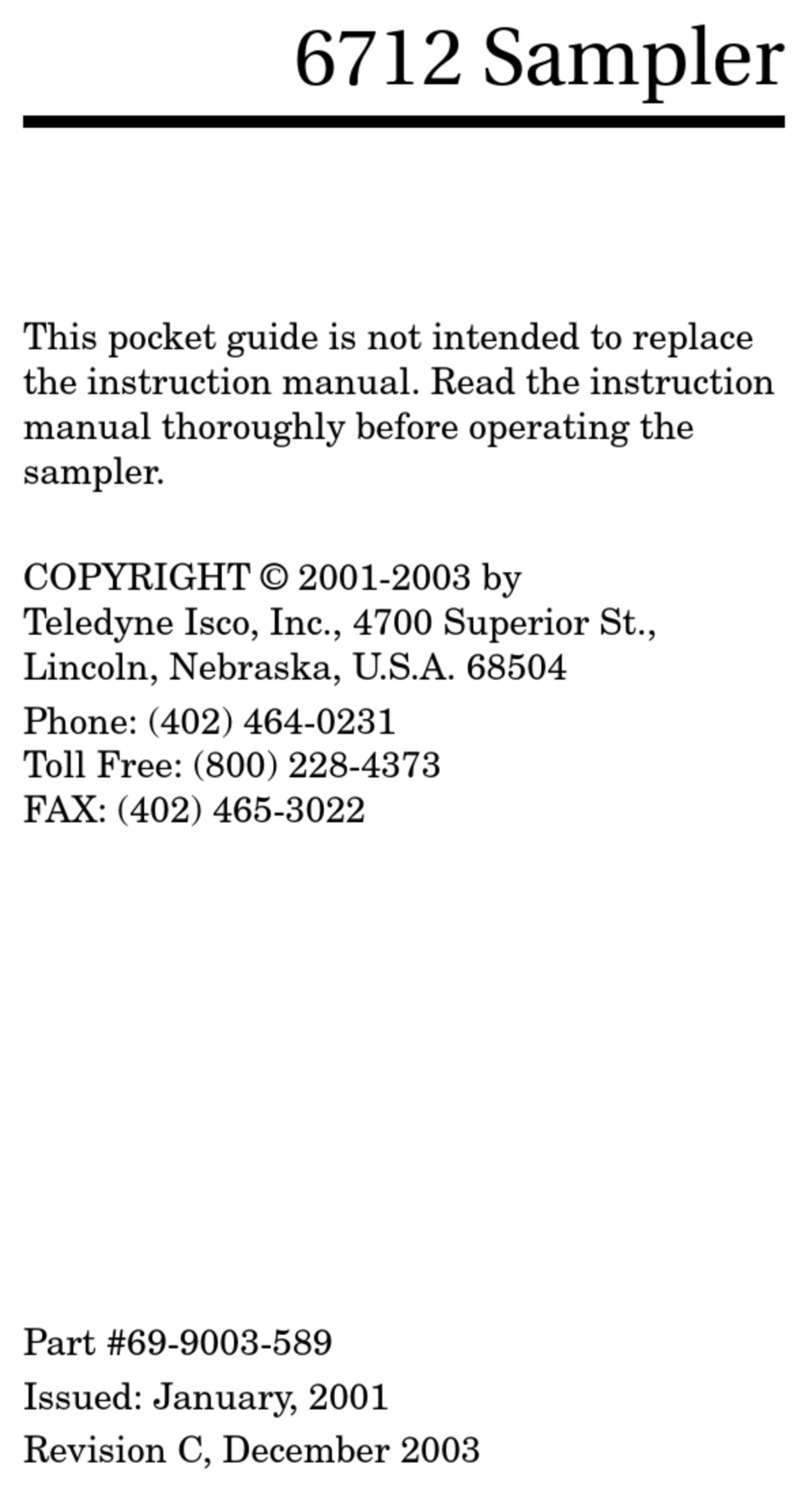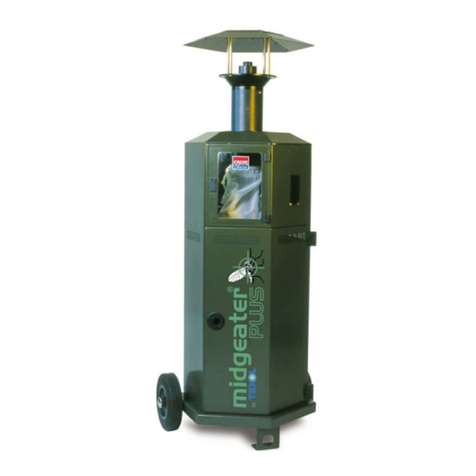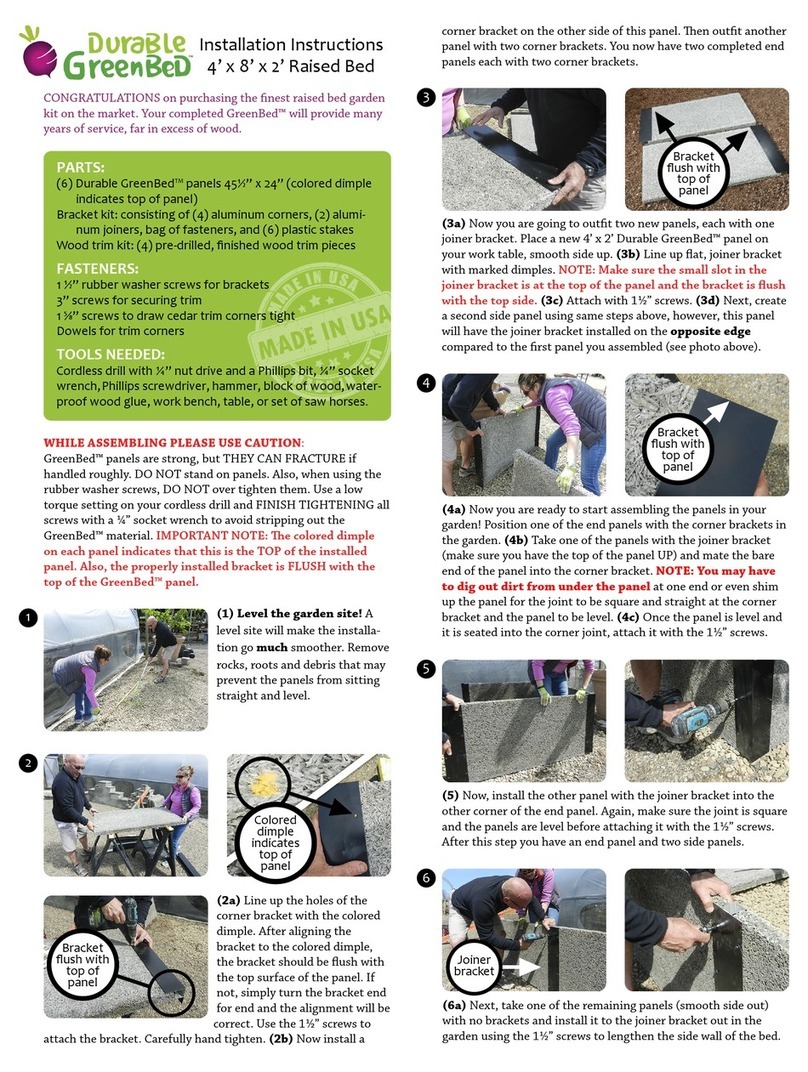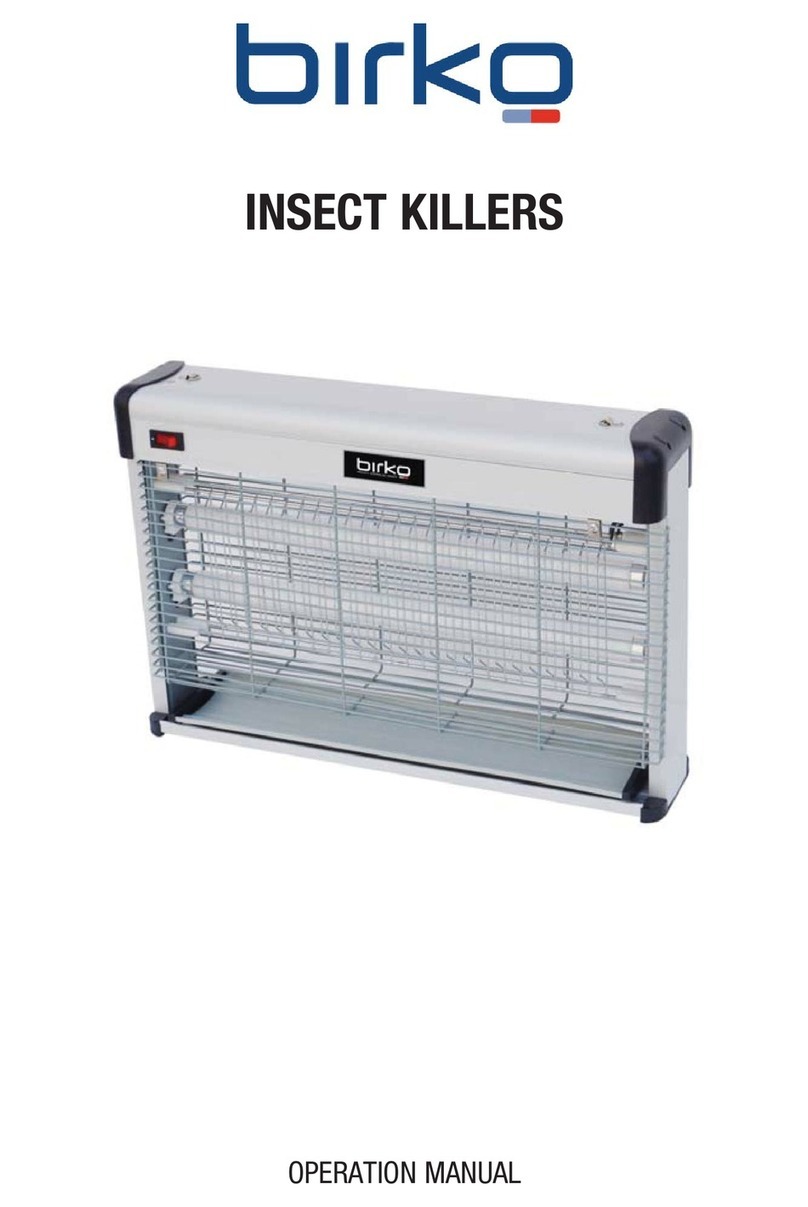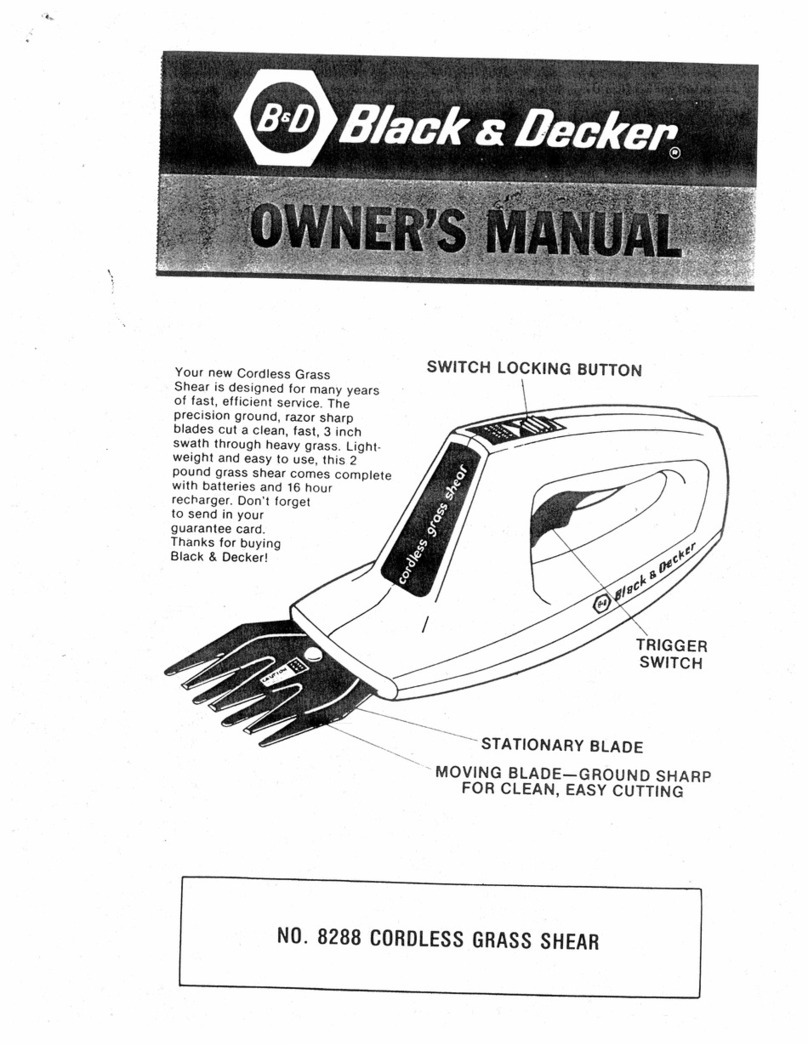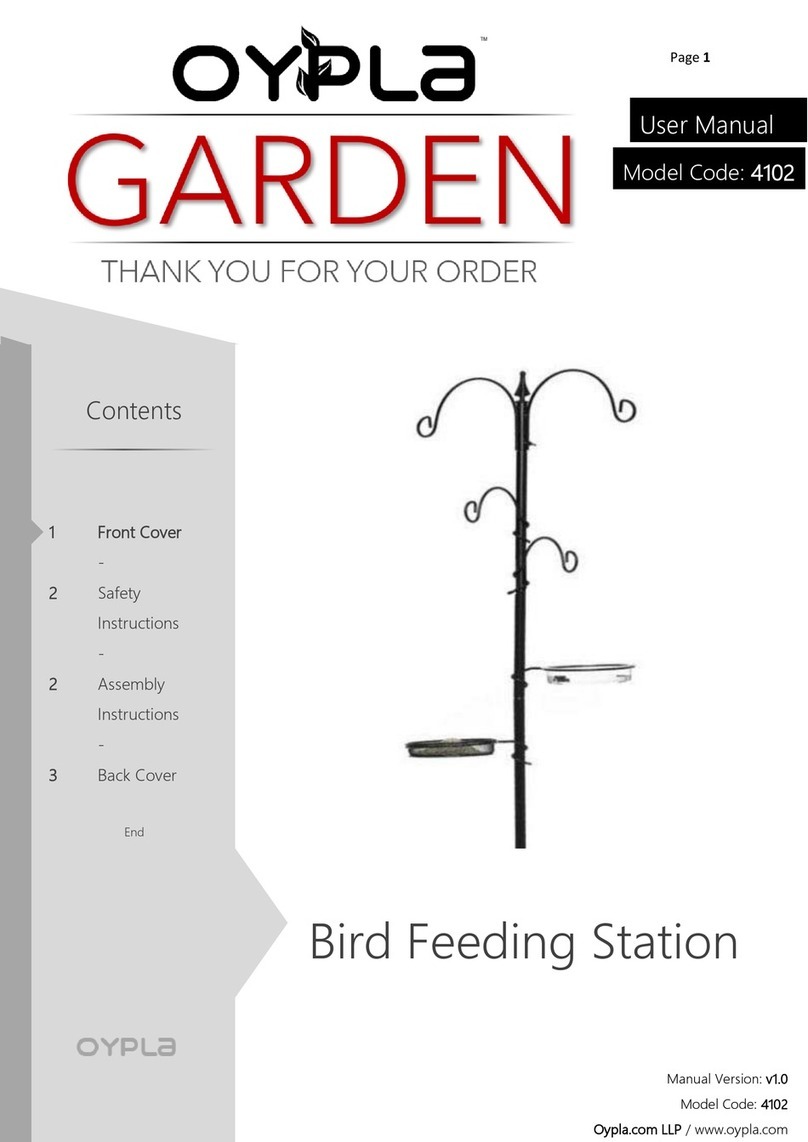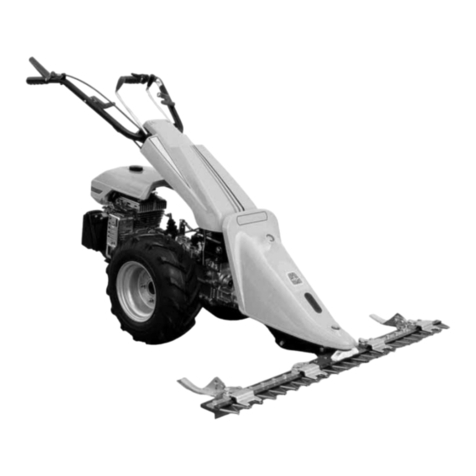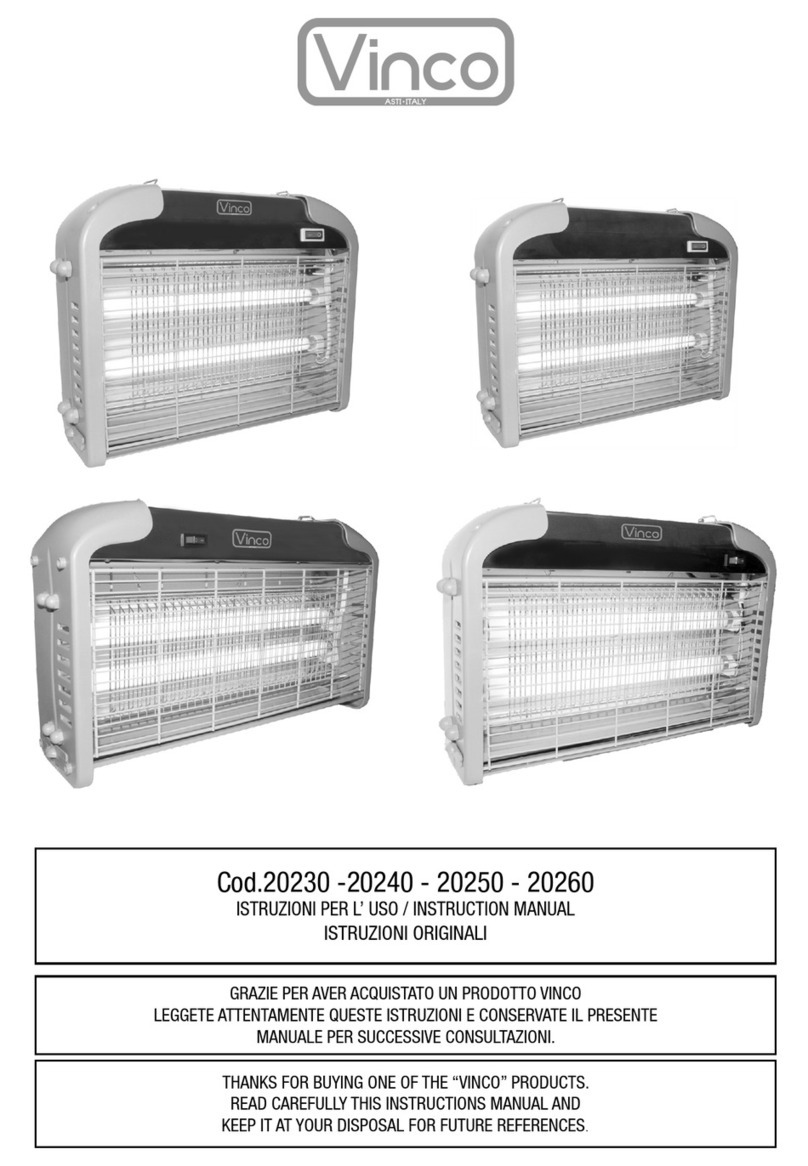Betstco FHM FH-FFM Series Application guide

www. Betstco.com
541-895-3083 M-F 7am-4pm PST
83371 Melton Rd, Creswell OR 97426
FH-FFM Forestry Mulcher Series

GeneralSafety Informa�on
E
nsure all potenal operators read this manual thoroughly before using the machine
S
afety: Ensure tractor and machine is stopped & keys out of ignion before set-up/maintenance
S
afety: Failure to follow good safety standards could result in severe injury oreven death
M
isuse: This machine is designed for use with compact tractors, and should be used only for the
i
ndicated purpose. We do not take responsibility if the machine is used for any one
p
urpose. Children must not operate the machine under any circumstance.
M
odifica�on: Do not modify equipment in anv way. This may impair the operaon and overal
s
afety of the machine.
T
ractor requirements: Use only with compact tractors within power range specied.
M
isuse transport: Do not use machinery to transport personnel or livestock.
C
ondi�on: For the safety of personnel and opmum performance of the machine, you should
c
heck the condion of the machine and the tractor before starng. Before use check all nuts and
b
olts are ght.
S
pa�al awareness: Always check the operang area is safe before starng machinery.
O
perator clothing: The operator should not wear loose clothing while operang machinery.
S
afety wear: Always use appropriate ear protecon when running a tractor and machinery
E
nsure you are wearing protecve gloves when servicing and using machinery.
B
ystander safety: Ensure bystanders keep away from the machine when it is in use. Do not
t
ouch moving parts when the machine is at work.
P
ublic places: When traveling on the road/public places, always keep the PTO turned o
M
aintenance: Always keep the machine maintained and in a good state. Where necessary
r
epair or replace any defecve parts. Do not modify the machine.
S
harp objects: Pay aenon to the sharp/pointed parts while servicing the machine.
S
afety guards: All protecve parts should be in good condion before operang machinery.
S
afety signs/s�ckers: Keep all safety signs clean and legible. Replace anywhich are missing or
i
llegible. If a component with safety sign(s) is replaced, make sure new safety sign(s) are
a
ached in the same locaons.
O
pera�ng speeds: Machinery and PTO should be operated at the recommended speed at all
mes.
S
afety awareness: Good safety requires that you familiarise yourself with various safety signs,
t
he type of warning and the area, or parcular funcon related to that area.
A
lertness: Never consume alcohol or drugs these can hinder alertness/coordinaon. Consult
your doctor about using this machine while taking prescripon medicaons.
WARNING! WE SHIP ALL OUR MACHINES DRY. THIS IS A SAFTEY PRECAUTION
AND ALSO PREVENTS OIL OR GAS FROM LEAKING DURING TRANSPORTATION.

Machinery Pre-Use Checks
'brake in' period as we like to call it, we always recommend checking over the ma-
chine.
• Tighten/Check any bolts and nuts securing blades.
• If your machine has belts, check the tension and adjust the belts or the pulleys
necessary.
• Apply greese to greese points if necessary.
Tractor Pre-Use Checks
pins are used on the linkage mountaing pins.
• Be sure to add extra weights to the front of the tractor or add wheel weights if
required.
-
remove the key.
the tractor.
Running/Opera�ng Checks
-
ery.
Post-Use Regular Checks
• Check blades, belts and wearing parts. Be sure they are not damaged and blades
WARNING! WE SHIP ALL OUR MACHINES DRY. THIS IS A SAFTEY PRECAUTION
AND ALSO PREVENTS OIL OR GAS FROM LEAKING DURING TRANSPORTATION.

READ MANUAL BEFORE OPERATING
DO NOT OPERATE OR PERFORM MAINTENANCE ON YOUR
FORESTRY MULCHER WITHOUT READING AND
UNDERSTANDING THIS ENTIRE MANUAL FIRST.
IF THIS MANUAL IS LOST OR IFY OU HAVE ANY QUESTIONS,
CONTACT FARMER-HELPER OR YOUR DEALER BEFORE YOU
PROCEED.
Understand the written instructions, rules and safety precautions:
•The written instructions rules and safety precautions are outlined
in this operation and safety manual.
• Check the rules and regulations at your location. The rules
include employer’s work safety regulations and local government
guildelines and restrictions for safe operation of the equipment.
Perform application training with operator:
•Conduct feld instruction with a trained Operator. Application
training should include complete vehicle safety, operation
training, complete mulching safety and application training.
• Know and understand your work conditions; hazards should be
reviewed and terrain surveyed at this time as well as with all new
work sites.
• Verify that the machine is in complete safe working order and
prepared for your application.

1. SAFETY
1.1 General
The forestry mulcher is designed to process heavy organic material
such as branches, stumps, heavy timber and brush.
1.2 Safety Instructions
This symbol is used throughout this manual to call attention
to safety procedures.
The word DANGER indicates an immediate hazardous
situation, which if not avoided, will result in death or serious
injury.
The word WARNING indicates a potentially hazardous situation
which, if not avoided, could result in death or serious injury.
The word CAUTION preceded with a safety alert symbol
indicates a potentially hazardous situation which, if not avoided,
may result in minor or moderate injury.

The word CAUTION without a safety alert symbol means
there is possiblity of a hazards that can result in equipment
damage.
Indicates information or a company policy that relates
directly or indirectly to the safety of personnel or protection
of property.
SAFETY FIRST
With any piece of equipment, new or used, the most
important part of its operation is SAFETY! FARMER-HELPER
Inc.
encourages you and your employees to familiarize
yourselves with your new equipment and to
STRESS SAFE OPERATION!!
Prior To Operation:
•Read the owner’s manual in its entirety and follow all safety
procedures.
•Check all grease points per the owner’s manual
•Inspect all fasteners for tightness with power off.
•Manually turn rotor to inspect tool bolts with engine off.
•Check gearbox oil (PTO models) for proper level per owner is
manual.

Obey all safety labels on the forestry mulcher. They are
provided for your protection. If any labels are removed,
damaged, or made unreadable in any way, call your FARMER-
HELPER dealer for a replacment.
1.3 Safety Regulations
Tag the engine operating area
to show that the machine is
being serviced. Use
lockout/tagout procedure
(29CFR 1910.147) during any
inspection or maintenance.
Stop action and read and
observe the operation and
safety manual in its entirety
following all safety
procedures before
operating or performing
maintenance.
Wait until all machine
components have completely
stopped before touching them.
Perform maintenance only
after the carrier has been
shut-off.
DO NOT EXIT CAB
while
rotor is still turning.

Danger fl ying objects; stay
back 300 ft (90m) from the
machine as long as the engine
is running.
Keep Safe Distance
Keep Hands and Feet clear of
rotor.
Hydraulic fl uid under
pressure. Use safe operating
procedures at all times.
Do not operate the Mulcher
without all guards in place.
Side and rear access panels
must be installed prior to
running.
Secure lifting cylinder with
locking device before getting
in hazardous area.
Insert safety lock before
getting in hazardous area.
Attach support before getting
into hazardous area.

Keep suffi cient distance
away from electrical power
lines.
1.4 FARMER-HELPER Forestry Mulcher – Description and
Applications
Forestry
Orchard Removal
Land Clearing
Transfer Stations
Stump Grinding
ROW Maintenance
Yard Waste Process
Forest Fire Prevention
Brush and Slash Piles
The versatile forestry mulcher was designed for shredding woody
materials. The forestry mulcher excels at processing yard waste,
land preparation and slash reduction. It has multiple uses for
farmers, parks, golf courses, loggers, land clearing companies,
ranchers, foresters and silvaculturists.
The mulchers fixed tools are designed to withstand daily brush
shredding, land clearing, and stump grinding operations.
The forestry mulch shreds material into a fine particle size by
going over the shredded material until the desired texture is
achieved.
If left on the ground the shredded material is beneficial to the soil.
On steep slopes the output from the mulcher is ideal for interim
erosion control.

1.5 Operational Safety The Work Area:
For the sake of this manual, the front of the mulcher is the side with
the rotor exposed. The rear has defection chains. For crawlers and
rubber tire machines, when the mulcher is mounted on the front of
the machine, the front of the mulcher is facing the same forward
direction. If mounted on the rear, the front of the mulcher is facing
away from the rear of the carrier. Mounting for excavators and
other boom-type installations may vary but references to the front
and rear of the mulcher remain the same
1.6 The Hazard Zone
FLYING DEBRIS OR OBJECTS AND FALLING OBJECTS CAN
CAUSE SERIOUS INJURY OR DEATH
Improper operation and failure to follow safety precautions
can cause serious injury or death. All personnel must be
clear of the hazard zone while the Mulcher is in operation.
The Hazard Zone is illustrated in Figure 1.1 on the following page. All
personnel should be kept clear of this zone while the mulcher is
operating.
The shaded area in the Hazard Zone must be considered OFF LIMITS
TO ALL INDIVIDUALS! The operator should follow the PRECAUTIONS
below before and during operation of the mulcher.

Hazard Zone Precautions
•It is the OPERATORS RESPONSIBILTY to ensure that NO ONE
ENTERS THE HAZARD ZONE!
WARN all persons in the area of the HAZARD ZONE
•STAY ALERT for outsiders entering the work area who may not
be aware of the HAZARD ZONE.
•Land clearing operations generally involve other machinery and
people on the site. MAINTAIN an AWARENESS of all working
traff c within 150 ft (45 m) (to each side) and 300 ft (90 m) (in
front and behind) of the Mulcher operation.
Figure 1.1
)ft (90 m300 300 ft (90 m)
Carrier
Mulcher
Excavator
300 ft (90 m)
300 ft (90 m)300 ft. (90 m)
ft (90 m)300

1.7 Dangerous Locations
FLYING DEBRIS OR OBJECTS AND FALLING OBJECTS CAN
CAUSE SERIOUS INJURY OR DEATH
Improper operation and failure to follow safety precautions
can cause serious injury or death. All personnel must be
clear of the hazard zone while the Mulcher is in operation.
DANGER EXISTS MOST PROMINENTLY IN FRONT OF AND
BEHIND THE MULCHER.
Pieces of wood and rock can project from the mulcher. This condition is
dangerous. This will occur when the mulcher is raised high enough to
allow material to escape.
FOLLOW THESE PRECAUTIONS:
•NEVER allow anyone to enter the Safety Zone of the
mulcherwhile it is in operation.
•INSPECT the Carrier and mulcher daily for damaged or missing
def ection chains and flaps
Be especially CAREFUL when:
•When the mulcher is being raised up and out of the material that
it is working in.
•When the mulcher is lowered into new material.

•CLOSE the hydraulic trap door (if equipped) while pull-working to
better contain material. This also increases the fineness of the
shredded product.
(See section 5.2, Mulcher Operation – Pull-working).
1.8 Urban Precautions
A STEP-UP of SAFETY PROCEDURES and PRECAUTIONS is
required when working:
•Near streets
•Near highways
•In parks, on golf courses or other inhabited areas
•Near buildings
ESTABLISH SAFETY PARAMETERS THAT FIT THE SITE:
•String colored warning tape to secure the work area.
•Place signs warning of mowing zone (if working along side of
highway) 1,000 ft (300 m) (minimum) before edge of Hazard
Zone is breached.
•Utilize a traffic director when the hazard zone impinges on
pedestrian or vehicular traffic.
•Erect barriers

2.0 OPERATIONAL SAFETY/ THE OPERATOR
2.1 Sound Levels/ Hearing Protection
HEARING PROTECTION MUST BE USED IN THIS AREA!
Take the following precautions:
•Always keep doors and windows of carrier closed.
•Use ANSI S3.19-1975 approved hearing protectors with a noise
reduction rating (NRR) of 25dB (A)
•Ear muffs
•Ear plugs (disposable or reusable)
2.2 Dust Protection
Prolonged and excess exposure to dust can cause
complications of your Respiratory System. Prolonged and
excess exposure to dust can cause chronic and acute health
problems.
Take the following precautions:

•Keep the door shut and windows of carrier closed.
•Utilize a NIOSH approved respirator with replaceable filters rated
for dust collection.
2.3 Protection from Flying or Falling Objects
BE ALERT of the possibility of projectiles exiting the machine.
Falling brush, branches, and trees also present a potential
hazard to the operator. As illustrated in Section 1
2.4 Avoid Power Lines
Serious injury or death can result from contact with electric
lines. Never move any part of the equipment or the tree it's
carrying, closer than 3 meters plus twice the line insulator
length to an electric line. Use a signal person to guide
operator. Use shrouds or insulators as necessary.
BE AWARE OF THE DIRECTION THAT TREES ARE FELLING!
ALWAYS DIRECT AWAY FROM POWER LINES!
2.5 Operator Protection

FLYING DEBRIS OR OBJECTS AND FALLING OBJECTS CAN
CAUSE SERIOUS INJURY OR DEATH
•Install minimum of 1/2” thick (1.25cm) Lexan™
Polycarbonate cab windows.
•Install approved FOPS falling Object Protection.
•Replace damaged or missing Polycarbonate windows or
falling object protection components.
Improper operation and failure to follow safety precautions
can cause serious injury or death. All personnel must be
clear of the hazard zone while the mulcher is in operation.
Take the following precautions!
The following precautions are recommended for operator protection.
Additional guarding may be required to protect the carrier, such as
belly pans or skid plates, etc. Always follow safety regulations and
certifications for your specific industry. Check with the manufacturer of
your carrier for recommended operator protection.
For PTO Carriers:
•A 1/2” (1.25cm) thick polycarbonate or equal, should be installed
in place of or outside of the cab glass between the operator and
the mulcher.
•A steel mesh screen of 2” (5cm) maximum openings and 1/4”
(.6cm) diameter wire is recommended outside of the cab
between the mulcher and the operator to protect Polycarbonate
from scratches.

For Forestry Prime Movers with Enclosed Cab:
•A 1/2” (1.25cm) thick polycarbonate or equal, should be installed
in place of or outside of the cab glass between the operator and
the mulcher.
•A steel mesh screen of 2” (5cm) maximum openings and 1/4”
(.6cm) diameter wire is recommended outside of the cab
between the mulcher and the operator.
For Excavators and Boom type Carriers with Enclosed Cab: •
Front of cab facing boom should have a 1/2” (1.25cm) thick
polycarbonate or equal, should be installed in place of or outside of
the cab glass between the operator and the mulcher. • A steel
mesh screen of 2” (5cm) maximum openings and 1/4” (.6cm)
diameter wire is recommended outside of the cab between the
mulcher and the operator to protect Polycarbonate from scratches.
For Mini-Track Loads and Skidsteers:
•Do not operate without enclosed cab.
•Cab door should have a 1/2” (1.25cm) thick polycarbonate or
equal, should be installed in place of or outside of the cab glass
between the operator and the mulcher.
•A steel mesh screen of 2” (5cm) maximum openings and 1/4”
(.6cm) diameter wire is recommended outside of the cab
between the mulcher and the operator to protect Polycarbonate
from scratches.
Take the following precautions!
•Make sure that the carrier vehicle has proper protection between
the operator and the mulcher. This will protect the operator as
well as the carrier control area. • Wear ANSI approved

protective eyewear such as: Safety Glasses, Goggles, Face
shield.
•Wear an ANSI approved hard hat.
•Wear appropriate ear protection.
•Steel toe shoes are an excellent safeguard for anyone on or
around machinery.
2.6 Stopping the Rotor Before Exiting the Carrier
Contact with moving rotor can cause serious injury or death. Do
not exit the vehicle before the rotor stops.
To stop rotor:
1. Lower the engine speed to
Idle
2. Shut off the mulcher circuit
3. Push the rotor into the ground
or other debris until rotor stops
If there is no place to stop the
rotor, wait for the rotor to stop
before exiting the cab.

3.0 CARRIER VEHICLE PREPARATION/MAINTENANCE
3.1 Shielding • Shielding is essential for protecting the Carrier and the
operator. All parts of the carrier closest to the mulcher are most
susceptible to damage.
•Use appropriate material as brush guards.
•The operator area should be protected as noted in Section 2.5
•Shielding must allow good access to service machine, clean and
remove debris.
3.2 Carrier Vehicle Preparation/Maintenance
AVOID INJURY OR DEATH
•Shut-off the engine. Put carrier in depressurized state.
•Wait until all machine components have completely stopped
before touching them.
•Use lockout/tagout procedure (29CFR 1910.147) during any
inspection or maintenance.
•Secure lifting cylinder with locking device before entering a
hazardous area.
•Insert safety lock before entering a hazardous area.
•Attach support before entering a hazardous area.
Refer to the Safety Section in this manual for more information.

3.3 Carrier Clean-up • Periodic removal of debris and dust from the
carrier vehicle is essential to continued successful operation and
FIRE PREVENTION.
•Open all compartments and remove all flammable debris such
as leaves, twigs, pine needles, wood chips, dust and any leaking
or spilt oil or fuel.
•Upon discovery of oil or fuel leaks, repair and clean up
immediately. Oil attracts dust and creates a fire hazard by
insulating lines causing excess heat generation. Inspect and
clean all dust from fittings and lines.
•Provisions should be made for removal of shredded wood
buildup between hoses, lift arms, lines, and other “nooks and
crannies.”
•A blower should be used to knock the dust and wood chips off
the entire carrier at least twice per day, wherever permissible by
the carrier manufacturer.
•Clean the radiator as required to avoid overheating.
•Use water only if it can dry thoroughly before operating. Dust
clings to anything wet and a wet radiator can quickly restrict air
flow.
•Contain and dispose of any petro-chemical runoff through a
licensed processing facility.
•Do not dispose of petro-chemical runoff into municipal waste.
•Do not use high pressure washer directly on electrical contacts.
Be careful using high-pressure washers, which may bend
and split the radiator fins.
This manual suits for next models
1
Table of contents
Popular Lawn And Garden Equipment manuals by other brands
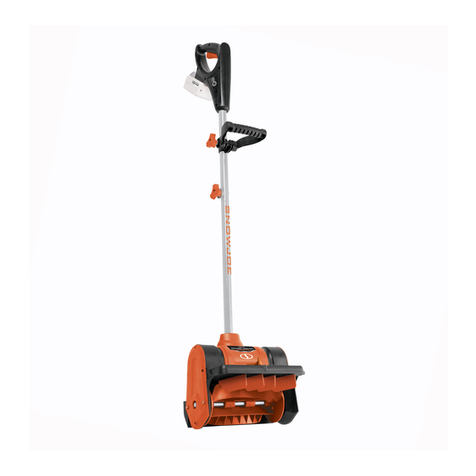
SNOWJOE
SNOWJOE SunJoe 24V-SS12-XR Operator's manual
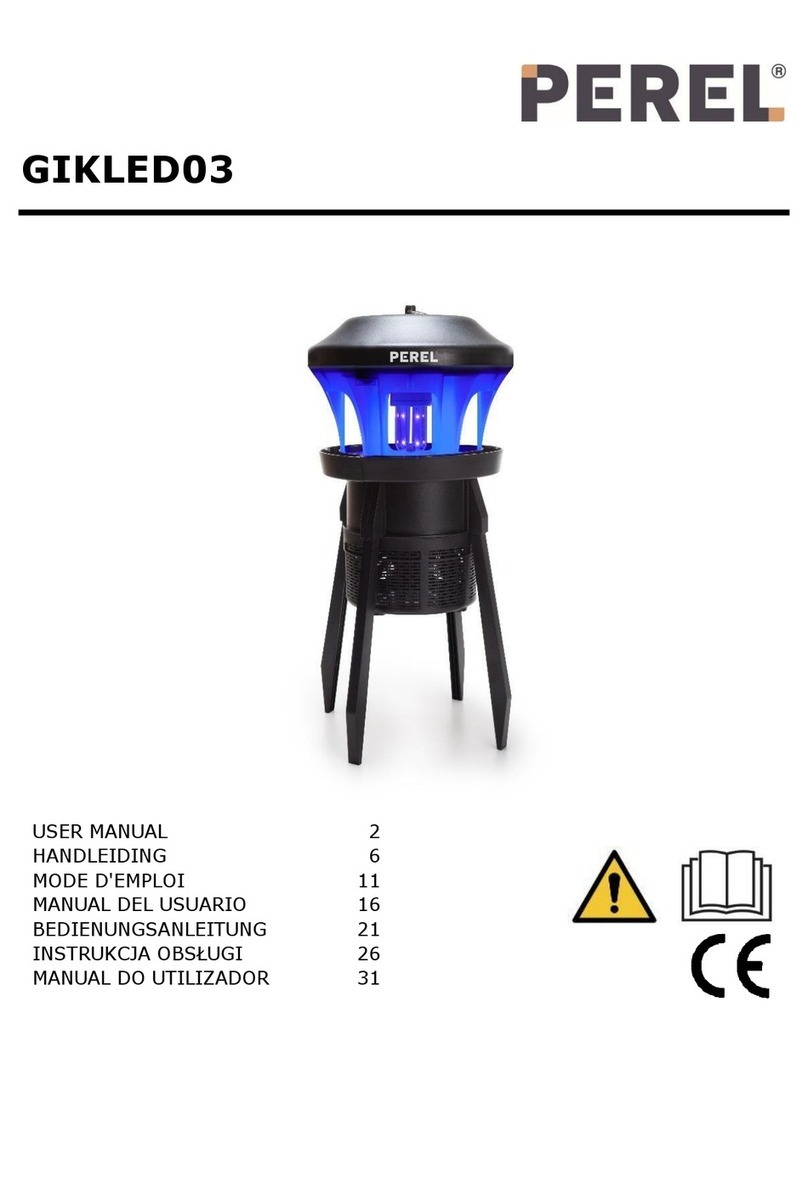
Velleman
Velleman PEREL GIKLED03 user manual
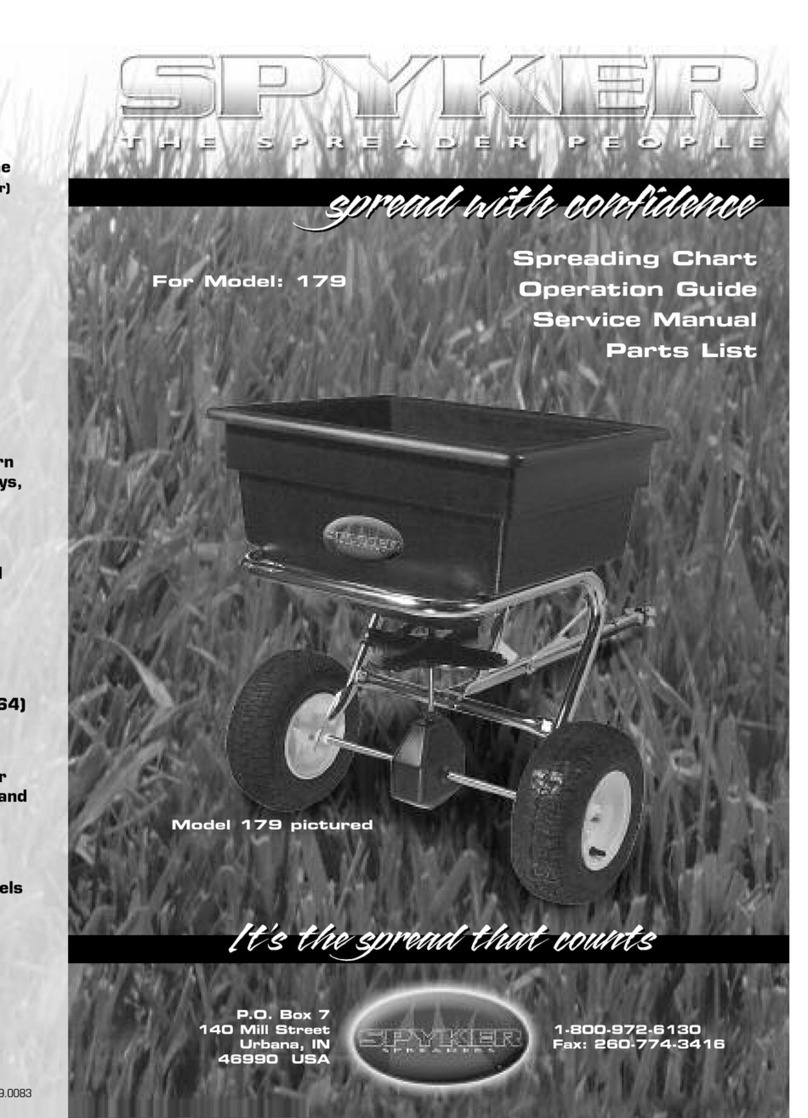
SPYKER
SPYKER 179 Operation guide service manual parts list
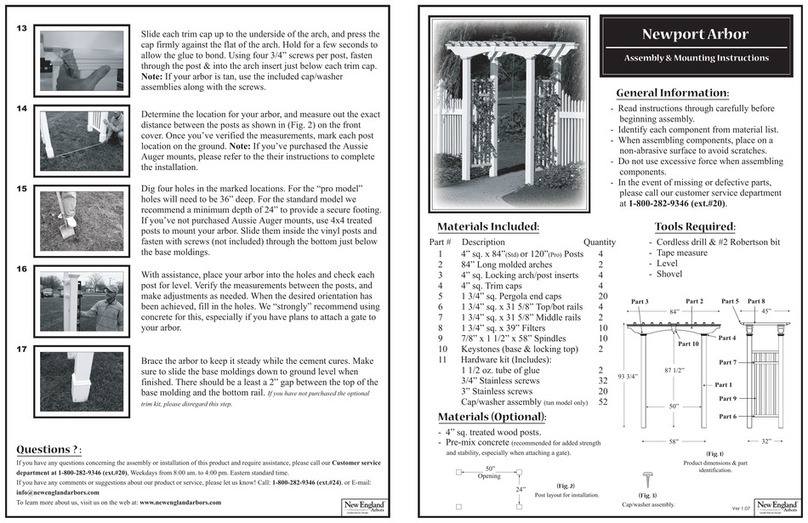
New England Arbors
New England Arbors Newport Arbor Assembly and mounting instructions
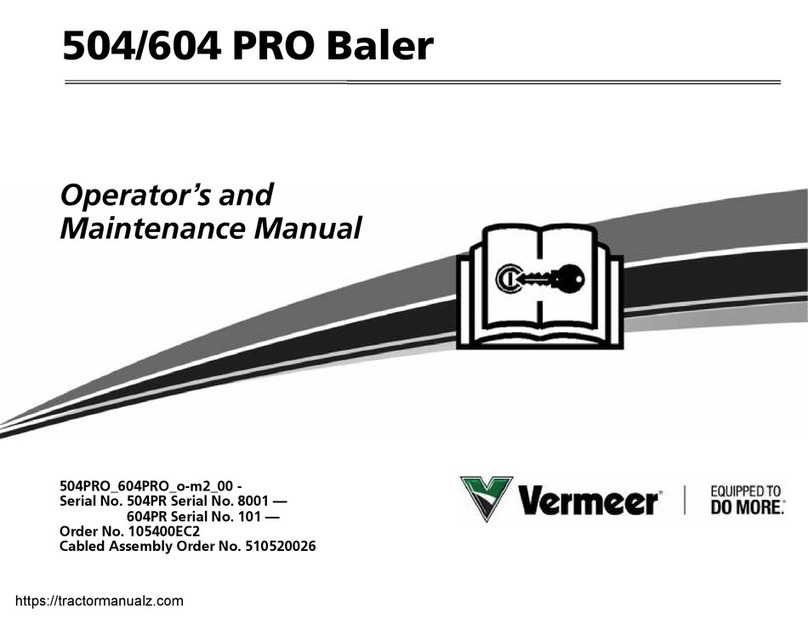
Vermeer
Vermeer 504 PRO Operator and maintenance manual
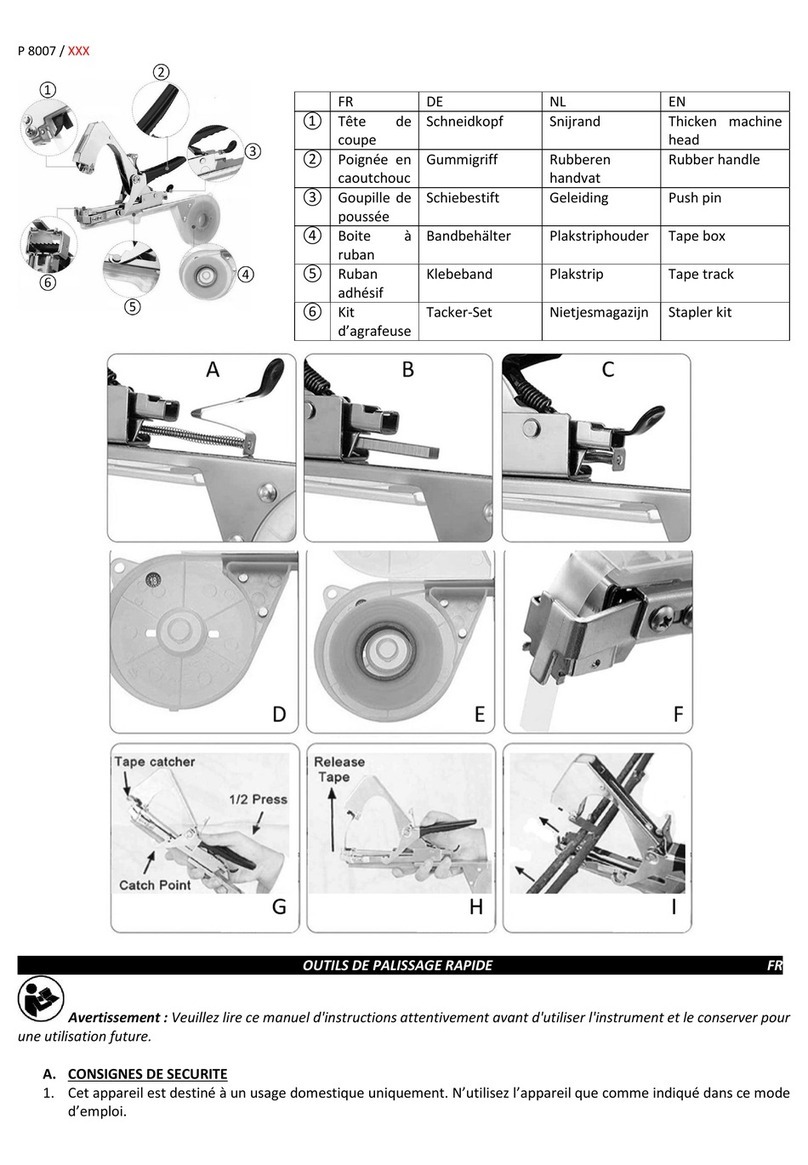
CAPTELEC
CAPTELEC P 8007 / Series quick start guide

